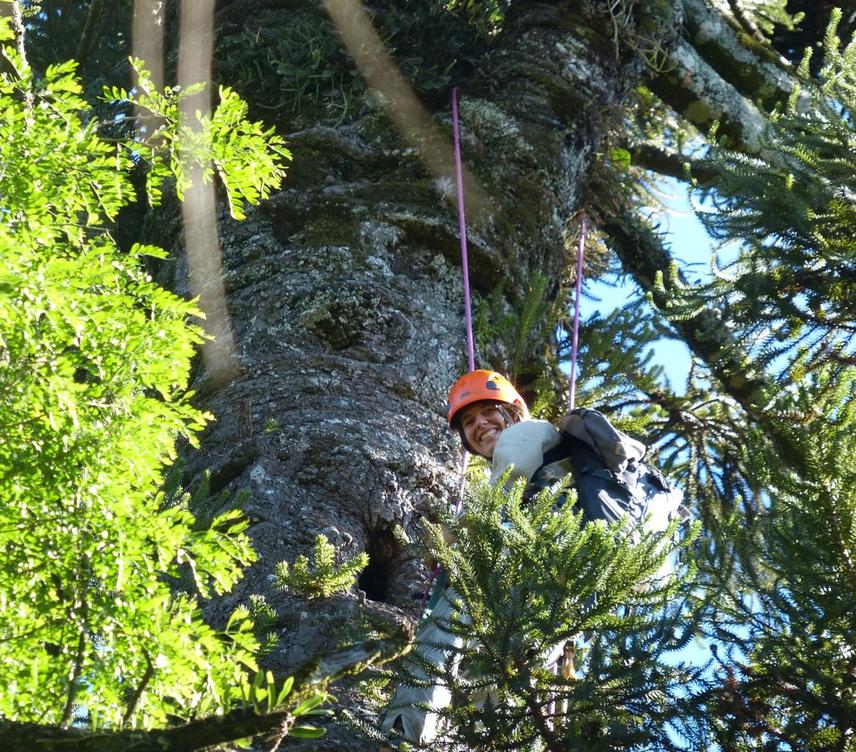Kristina Louise Cockle
Other projects
11 Sep 2003
Status and Conservation of Birds and Large Mammals in Remnant Parana Pine Forest, Misiones, Argentina
21 Sep 2015
Parana Pine Forest Project: Research and Outreach to Conserve Nest Sites for Globally Threatened Birds in Argentina
This project aims to conserve Argentina’s Parana Pine (<em>Araucaria angustifolia</em>) forest and its fauna through research and community outreach.

We work to conserve Argentina’s Parana Pine (Araucaria angustifolia) forest and its fauna through research and community outreach. In Argentina’s Parana Pine forest, part of the Atlantic forest biodiversity hotspot, farmers and threatened bird species coexist in a mosaic landscape of forest remnants, tree plantations, family farms, and remnant Parana Pine trees. Many of the birds are threatened by habitat loss/degradation and/or nest-robbing for local pets. These threats can be reduced through applied research and environmental education.
Beginning in 2003, with the support of a Rufford Small Grant for Nature Conservation, we determined the distribution, abundance, and conservation status of threatened birds of the Parana Pine forest, and began a community outreach program among local farmers. We reported our results in scientific journals and conferences, in the local and national media, in reports to the province’s Ministry of Ecology, in public talks, and in the book ‘Important Bird Areas of Argentina’.
Key results include:
We recorded 355 bird and mammal species; 24 are globally threatened;
The top priority site for Parana Pine forest fauna is the mosaic landscape from San Pedro to Tobuna, including ‘Araucaria’ and ‘Cruce Caballero’ Provincial Parks;
The Vinaceous Amazon, a globally vulnerable parrot, was absent from many sites where it was recorded historically. It formed large flocks every year in March, fed on a wide variety of native and exotic fruits and seeds, roosted in isolated trees, and nested in forest remnants on farms. We estimate that 200 to 300 individuals remain in Argentina, mostly between San Pedro and Tobuna;
The vulnerable White-bearded Antshrike is dependent, in our study area, on relatively large stands of Guadua bamboo;
The Blue-winged Macaw was heavily persecuted as a crop pest in the Parana Pine forest, and is probably now extinct in Argentina;
Many farmers were eager to participate in conservation. They helped with field research, donated their pet Vinaceous Amazons to a wildlife rehabilitation centre, and made a commitment to conserve parrot nests on their farms.
The next phase of our project focuses on the Vinaceous Amazon and other birds that nest in tree cavities. Such species are often limited by the availability of nest sites, especially in logged forests. We are:
1) determining the nest site requirements for cavity-nesting birds,
2) continuing to provide environmental education to reduce nest-robbing and deforestation,
3) evaluating nest-boxes as a conservation and outreach tool.